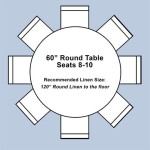Exploring The Legend Of King Arthur And The Round Table
The legend of King Arthur, a cornerstone of British folklore and fantasy, continues to captivate audiences centuries after its initial emergence. Woven with narratives of chivalry, magic, and political intrigue, the Arthurian cycle presents a complex tapestry of characters and events centered around the figure of Arthur, a mythical king who defended Britain against Saxon invaders. Central to this enduring myth is the Round Table, an iconic symbol of equality and fellowship among Arthur's knights. Understanding the origins, symbolism, and evolution of both Arthur and the Round Table provides valuable insights into the enduring appeal of this legendary saga.
The historical basis for King Arthur remains a subject of considerable debate. While no unambiguous historical evidence confirms his existence, some scholars propose that Arthur may have been a Romano-British military leader who rallied resistance against Anglo-Saxon incursions in the 5th or 6th centuries. Figures like Ambrosius Aurelianus, mentioned in Gildas's "De Excidio et Conquestu Britanniae," have been suggested as possible inspirations for the Arthurian character. However, the Arthur of legend, as depicted in medieval romances, is a figure far removed from any historically verifiable individual. He is a king born of magical circumstances, mentored by the wizard Merlin, and destined to unite Britain under a just and righteous rule.
The Origins and Evolution of the Arthurian Legend
The earliest known references to Arthur appear in Welsh literature, including the "Historia Brittonum" attributed to Nennius (circa 830 AD) and the "Annales Cambriae" (circa 960 AD). These texts depict Arthur as a war leader, rather than a king, who fights against the Saxons in a series of battles, most notably at Mount Badon. In these early accounts, there is no mention of the Round Table or many of the other familiar elements of the later Arthurian romances.
Geoffrey of Monmouth's "Historia Regum Britanniae" (History of the Kings of Britain), written around 1136, significantly expanded the Arthurian narrative. Monmouth presented Arthur as a powerful king who ruled over a vast empire and conquered much of Europe. This work introduced many of the key elements of the Arthurian legend, including Arthur's birth at Tintagel, his sword Excalibur, and his final battle at Camlann. While "Historia Regum Britanniae" is now recognized as a work of historical fiction rather than accurate history, it played a crucial role in popularizing the Arthurian legend and establishing its enduring appeal.
The development of Arthurian romance in the 12th and 13th centuries further transformed the legend. Chrétien de Troyes, a French poet, wrote a series of romances that introduced themes of courtly love, chivalry, and individual knightly quests. These romances, such as "Lancelot, the Knight of the Cart" and "Perceval, the Story of the Grail," expanded the cast of characters and explored the moral complexities of Arthur's court. The stories of Lancelot and Guinevere's adulterous affair, the quest for the Holy Grail, and the tensions between loyalty and personal desire became central components of the Arthurian narrative.
Sir Thomas Malory's "Le Morte d'Arthur," written in the 15th century, is considered the definitive version of the Arthurian legend in English. Malory synthesized various earlier sources into a comprehensive and coherent narrative, focusing on the rise and fall of Arthur's kingdom. "Le Morte d'Arthur" emphasizes themes of chivalry, honor, and the tragic consequences of betrayal and moral failings. Malory's work has had a profound influence on subsequent interpretations of the Arthurian legend, shaping our understanding of Arthur, his knights, and the Round Table.
The Round Table: Symbolism and Significance
The Round Table, as a symbol of equality and fellowship, did not appear in the earliest Arthurian accounts. While references to Arthur's court and his warriors existed, the concept of a circular table where all knights were considered equal emerged later in the development of the legend. Wace's "Roman de Brut" (circa 1155) is generally credited with introducing the Round Table into the Arthurian narrative, describing it as a practical solution to prevent quarrels over seating arrangements among Arthur's knights.
The physical form of the Round Table is significant. The circular shape symbolizes equality, as there is no head or foot, and no knight holds a position of higher status than another. This egalitarian ideal reflects the values of chivalry, where knights were expected to treat each other with respect and honor, regardless of their individual rank or achievements. The Round Table served as a meeting place for Arthur's knights, where they could discuss matters of state, plan military campaigns, and celebrate their victories. It was a focal point of Arthur's court, representing the unity and camaraderie of the fellowship of the Round Table.
The knights of the Round Table are renowned for their strength, courage, and adherence to a strict code of chivalry. Figures such as Lancelot, Gawain, Perceval, and Galahad represent different aspects of the ideal knight, each with their own strengths and weaknesses. Lancelot, the greatest knight of the world, is renowned for his unmatched combat skills but ultimately falls from grace due to his affair with Queen Guinevere. Gawain embodies loyalty and honor, but his adherence to the letter of the law sometimes leads to unintended consequences. Perceval and Galahad represent spiritual purity and the quest for the Holy Grail, demonstrating that true knighthood involves more than just physical prowess. The individual stories of these knights, and many others, contribute to the rich tapestry of the Arthurian legend, exploring themes of virtue, temptation, and the challenges of upholding moral ideals.
Themes of Chivalry, Magic, and the Fall of Camelot
Chivalry, a code of conduct that emphasized honor, courage, courtesy, and loyalty, is a central theme in the Arthurian legend. The knights of the Round Table were expected to uphold these ideals in their dealings with each other, with their king, and with the world at large. Chivalry influenced their behavior on the battlefield, in courtly settings, and in their personal lives. However, the Arthurian legend also explores the limitations and contradictions of chivalry, demonstrating how adherence to a rigid code of conduct can sometimes lead to unintended consequences and moral dilemmas. The conflict between loyalty to one's king and one's personal desires, as exemplified by Lancelot's affair with Guinevere, highlights the complexities of living up to the ideals of chivalry.
Magic is an integral part of the Arthurian legend, permeating almost every aspect of the story. Merlin, the powerful wizard and advisor to Arthur, represents the influence of magic on the affairs of humans. He orchestrates Arthur's birth, guides him through his early years, and provides him with magical weapons and advice. Magic also plays a role in other aspects of the legend, such as the enchantment of Excalibur, the mystical properties of the Holy Grail, and the presence of sorceresses like Morgan le Fay. The inclusion of magic adds a sense of wonder and mystery to the Arthurian legend, while also serving as a metaphor for the unpredictable forces that shape human destiny.
The fall of Camelot, the legendary kingdom of King Arthur, represents the tragic consequences of betrayal, moral failings, and the inevitable decline of even the most glorious civilizations. The seeds of Camelot's downfall are sown by the adulterous affair between Lancelot and Guinevere, which undermines the trust and loyalty that are essential to the functioning of Arthur's court. Mordred, Arthur's illegitimate son, further exacerbates the situation by plotting to seize the throne while Arthur is away on a campaign. The final battle at Camlann, where Arthur and Mordred mortally wound each other, marks the end of Arthur's reign and the disintegration of the Round Table fellowship. The fall of Camelot serves as a cautionary tale about the fragility of power, the importance of moral integrity, and the enduring consequences of human weakness.
The Arthurian legend continues to resonate with audiences today. Its themes of chivalry, justice, and the struggle between good and evil remain relevant in a world often characterized by conflict and moral ambiguity. The story of King Arthur and the Round Table has been retold and reinterpreted in countless books, films, and other media, each generation finding new ways to connect with this enduring myth. The legend's flexibility allows it to be adapted to different cultural contexts and to explore contemporary issues, ensuring that the story of King Arthur will continue to captivate and inspire for generations to come. Studying the King Arthur and the round table contents reveals an amazing history and an interesting topic to explore.

10 Key Facts About King Arthur And The Knights Of Round Table Medieval Chronicles

Knights Of The Round Table Who Were They In Arthurian Legend Historyextra

The Round Table Quondam Et Futurus Fandom

Mythical Reality Exploring The Legend Of King Arthur And Camelot Round Table

Exploring Arthurian Legend Neh Edsitement

The Knights Of Round Table Quondam Et Futurus Fandom

Le Morte D Arthur The Definitive Tale Of King His Knights

New Medieval Rpg Is Like An Arthurian Baldur S Gate That You Can Try Right Now

King Arthur And The Knights Of Round Table Ebook By Epub Rakuten Kobo United States

Historians Locate King Arthur S Round Table
Related Posts








